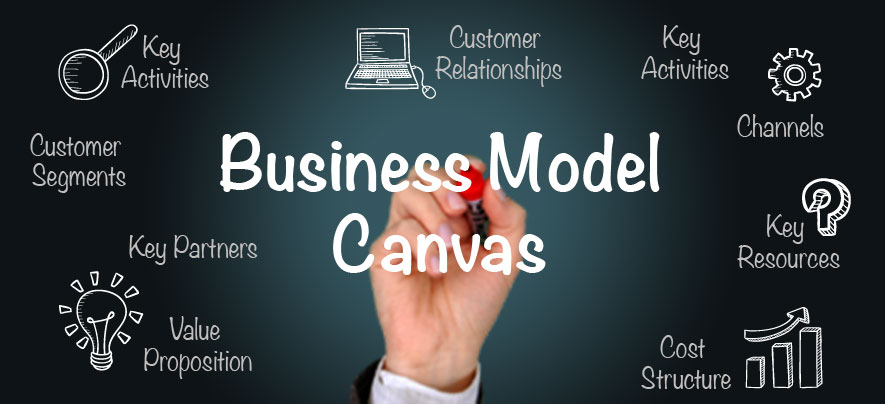How to Make a Perfect Business Model Canvas?

Business Development
478 week ago — 6 min read
We hear the term ‘startup’ time and again these days. Any person with a passion or a business idea wants to have a startup, attract VC (venture capital) funding and make millions of money. I have always wondered why they want to be a startup when they could be comfortable in a MNC job, earning an assured monthly salary while working fixed hours.
There could be several reasons for these people to start their own company, including getting attracted by the success stories of similar startups and the passion for their idea, which they wish to convert into business. Amidst all the success stories and huge amounts of money, they do not see the many failures hidden behind the scenes and also don’t know if the seemingly successful startups are really making money.
So what does one do? For a moment, the reader may think I am dissuading them to be an entrepreneur. Not really so, but I would wish to shed light on the steps that one should take from level zero, which is ‘passion’, that will bring success.
Recently, I was talking to one of my friends working in a MNC in USA. She is eager to guide and mentor entrepreneurs but said that many of them come armed only with passion and do not know anything about the next step nor do they know anything about the domain or the industry where they are seeking to market their product or service. When I started as an entrepreneur, I was in the same situation. I did not seek VC funding as I could get some loyal customers for our software offerings, and this kept us stay afloat. But this will not be the case with everyone else.
Let me therefore share the three steps an entrepreneur should take for their success.
Step 1: Think about one or more business ideas. Never stop with just one idea. You cannot be a one product company.
Step 2: Identify customers for your product or service. If you do not find the product or service to be of value to any kind of customer, do not be afraid to scrap the idea without spending any more money.
Step 3: Describe your idea as a ‘Business Model’. Simply put, business model is a description of what you wish to do and how you will achieve success. Only a professional business model can be converted to a workable Business Plan.
How does one draw a Business Model then? Yes, you have the Business Model Canvas. The Business Model Canvas is the new language for describing, visualising and assessing business models. It is the first step towards developing a Business Plan that everyone will accept.
The Business Model Canvas has nine components, for which a passionate entrepreneur must devote dedicated time. I firmly believe that an entrepreneur would like to see his ideas become a reality quickly and unless he draws up a sharp Business Model with a clear plan of action, success will be a farfetched reality.
So these nine components, in the order I usually prefer to use, are:
1. Value Proposition - What is that issue of the customer or the needs that the business is addressing? How will the products or services address needs of different customer segments? What are the core benefits of the product or service?
2. Customer Segments - What are the customer categories or business domains where we are looking to provide the product or service? Who will be the majority users or consumers of the product or service?
3. Customer Relationships - What type of relationship will be established with different types of customer segments and how will these be maintained? How are they integrated into the rest of the business model?
4. Channels - Which channels will be leveraged to reach the targeted customer segments? How are the channels integrated? (Eg: Online, shops etc.)
5. Key Activities - What key activities will deliver the value proposition? (Eg: Manufacturing, software development etc.)
6. Key Resources - What are the important resources that are required to be in place, including infrastructure, human resources, assets etc.
7. Key Partners - Who are the key partners to collaborate with in delivering the value proposition? (Eg: Key suppliers, vendors etc.)
8. Cost Structure - What are the most important costs inherent in the business model? (Eg: Resource cost, infrastructure cost etc.)
9. Revenue Streams - What are the options through which we expect revenue to flow in? (Eg: Online sales, retail etc.)
If one spends quality time on the Canvas, the result will be a good Business Model for the product or service one wishes to deliver. A Business Model Canvas is a language for describing a Business Model and if a startup or an already established entrepreneur uses the Canvas to describe the business model, success rate will be high. With a proper Business Model in place, it is easy to prepare a business plan which can be presented to the VCs.
Is the Business Model Canvas only for a startup or an entrepreneur? No, even established organisations may leverage the Business Model Canvas when seeking to introduce a new product in the market.
To know more about Business Model Canvas, link with me by clicking on the ‘Invite’ button on my eBiz card below.
Posted by
Sridhar NarayanaswamyManaging partner of Innovatus Systems, founded by him on January 1, 2013. Sridhar is a result oriented professional with over four decades in the Information Technology &...
Network with SMEs mentioned in this article
View Sridhar 's profile
Other articles written by Sridhar Narayanaswamy
View AllMost read this week














Comments (1)
Share this content
Please login or Register to join the discussion